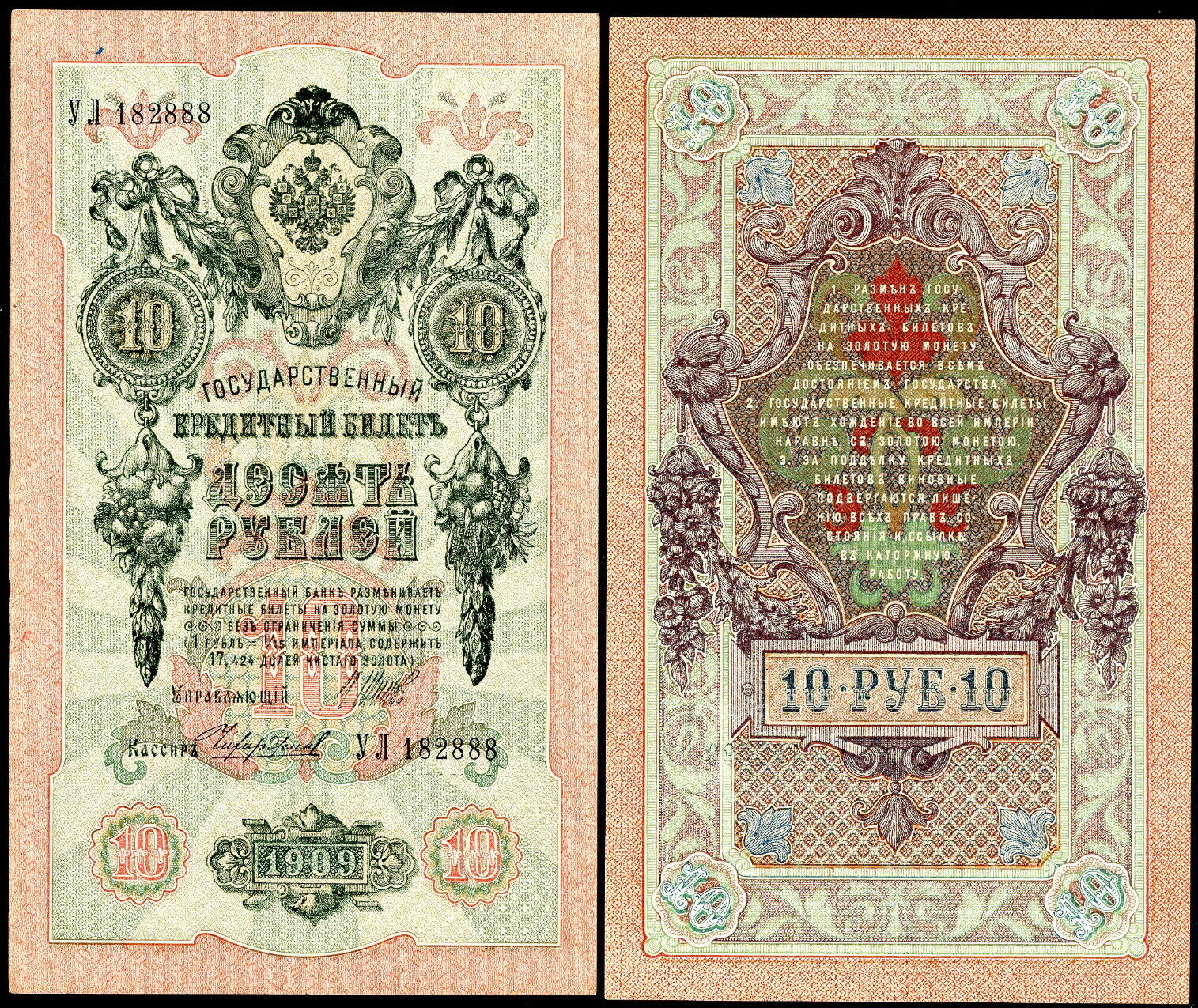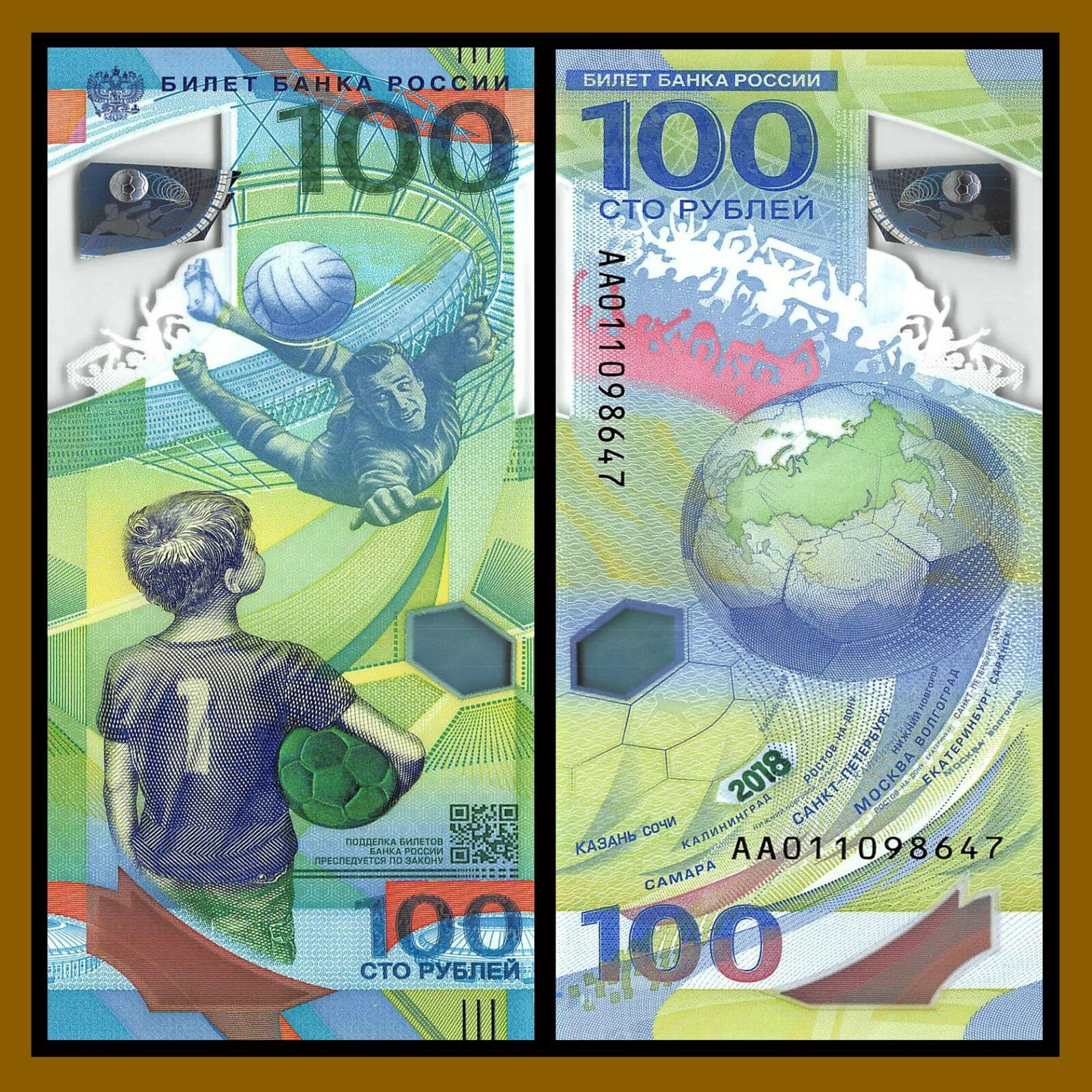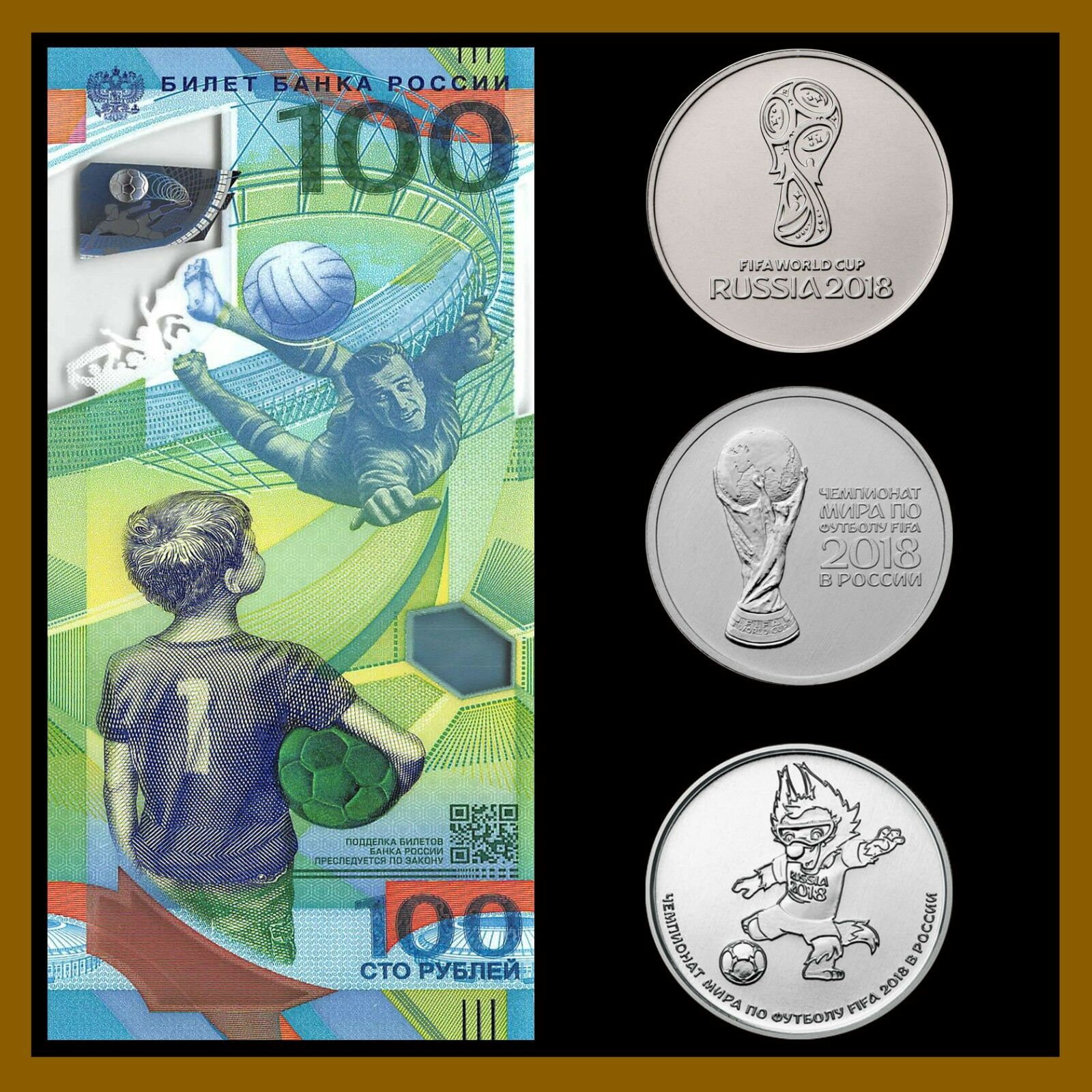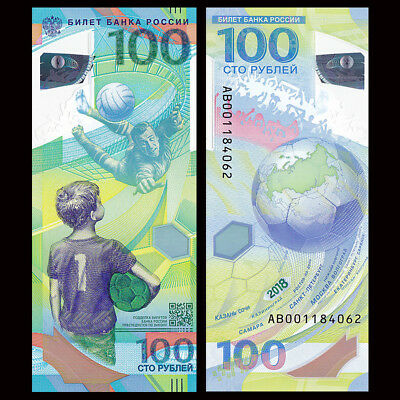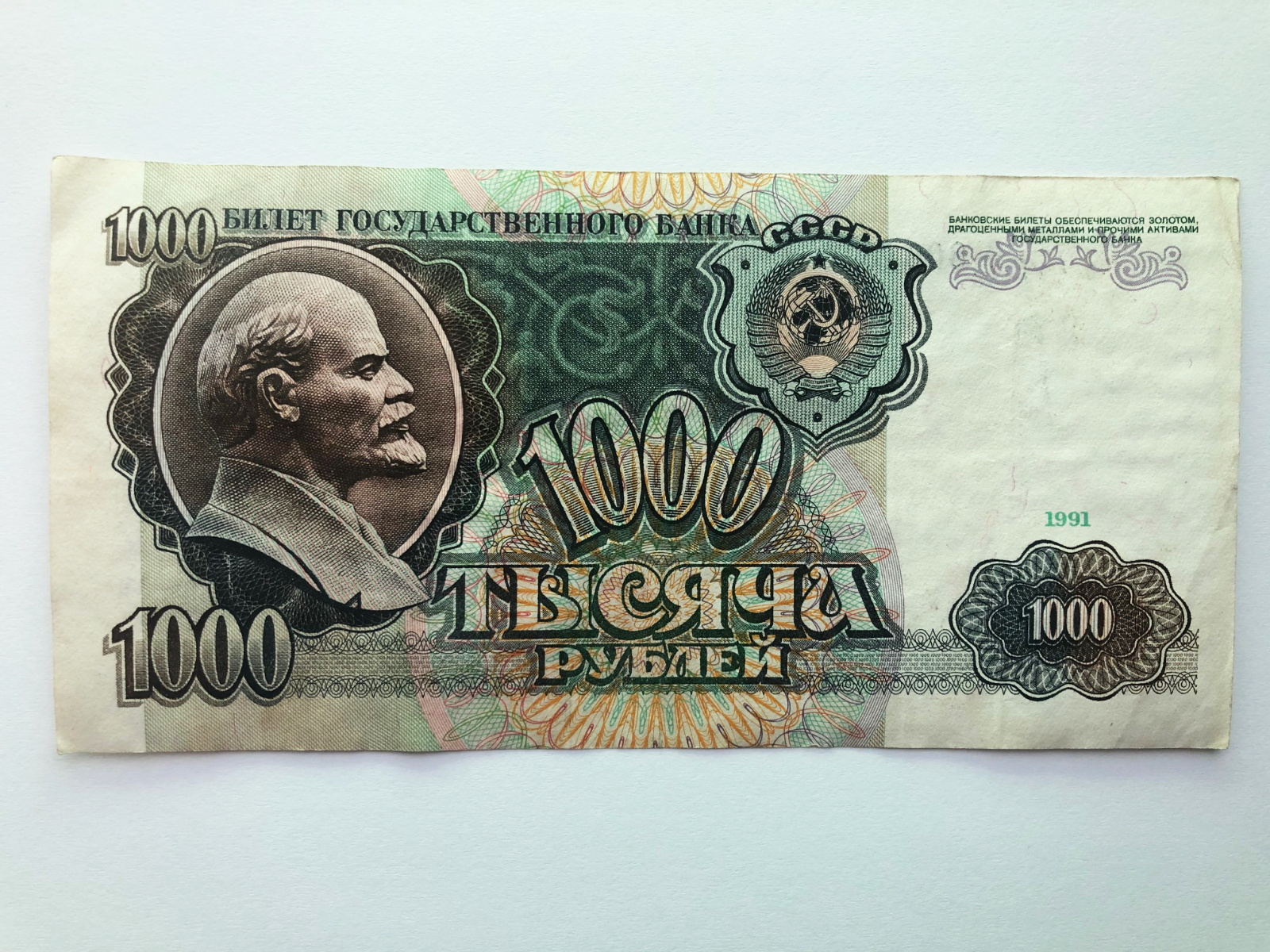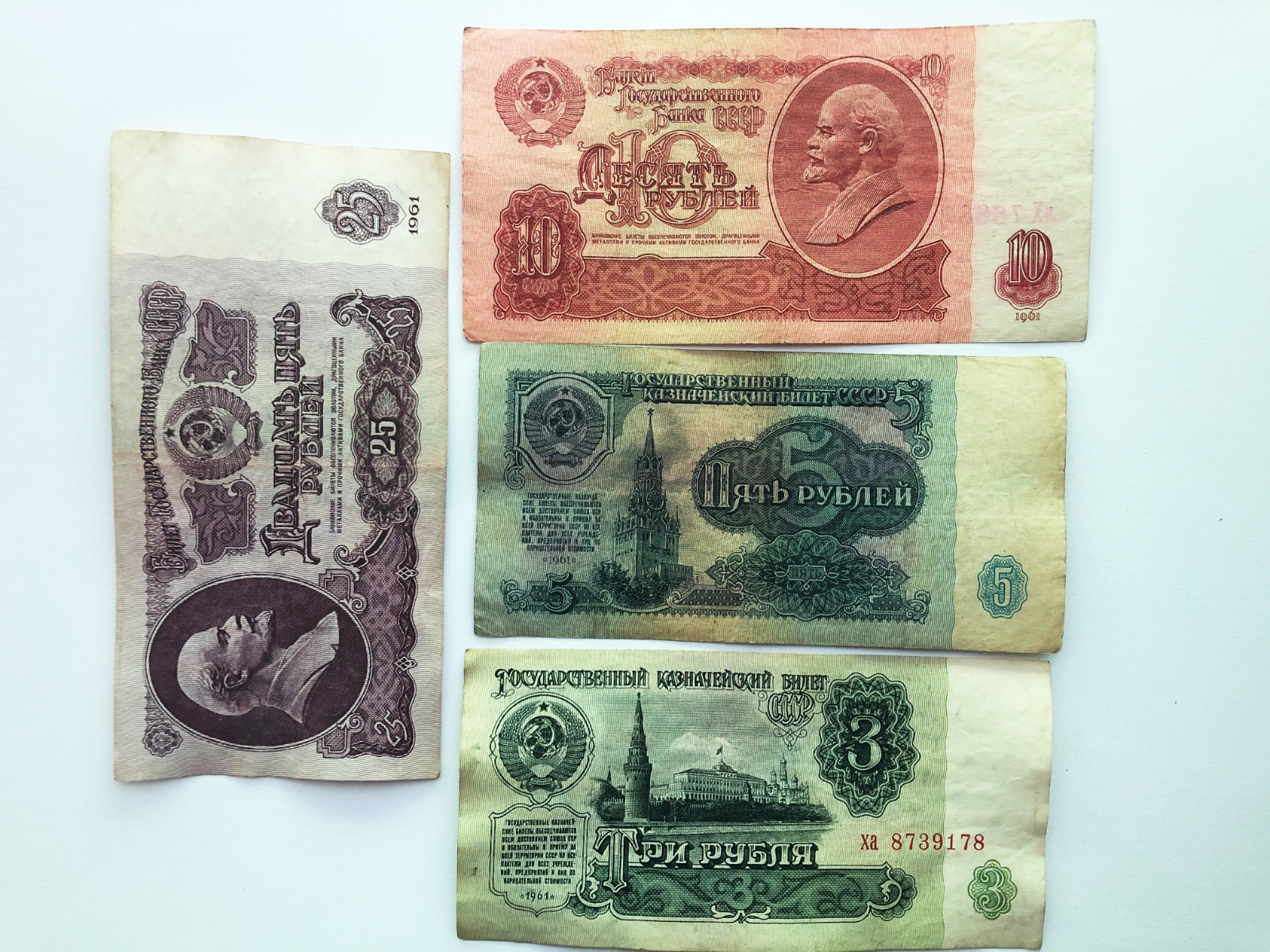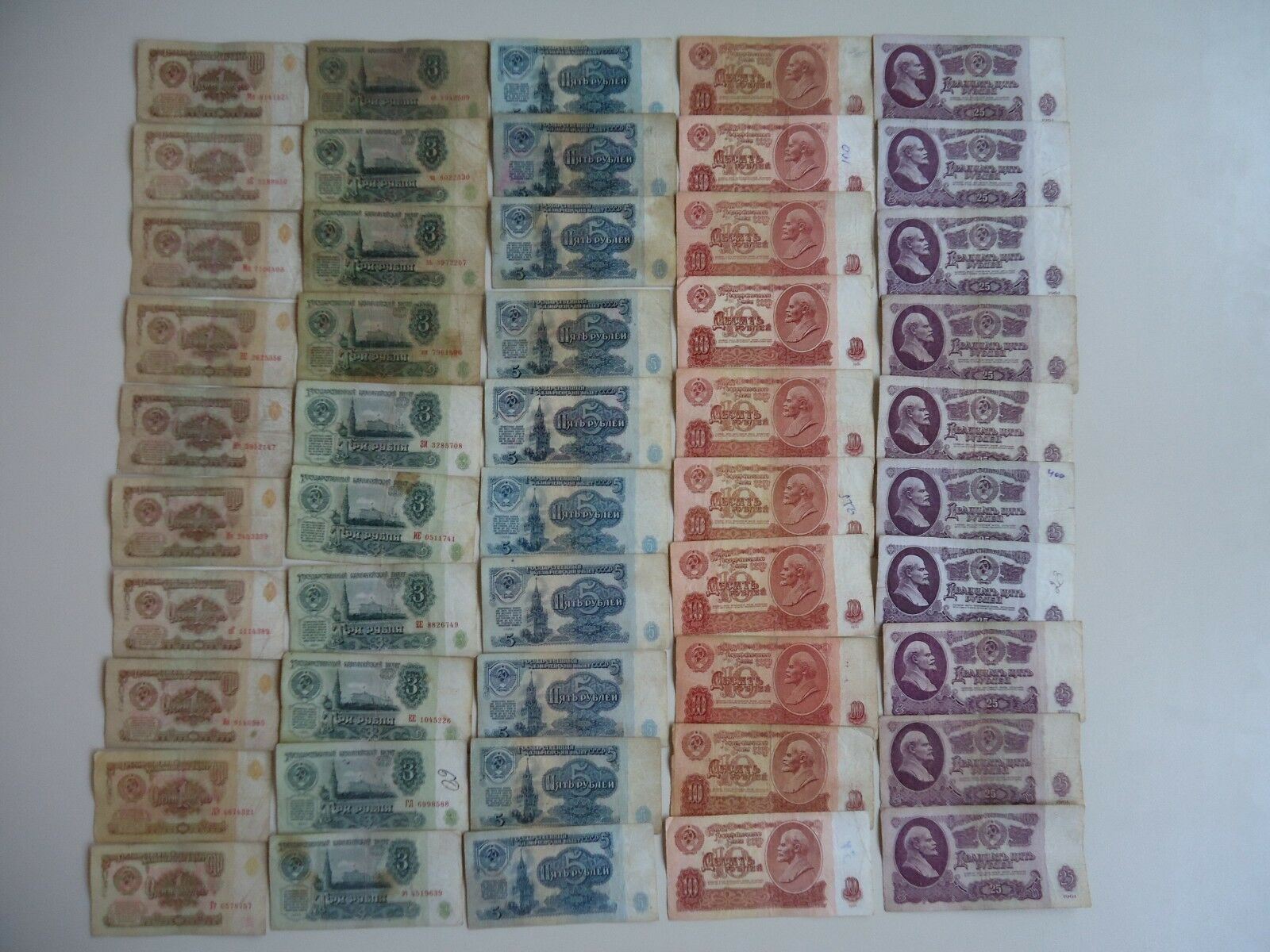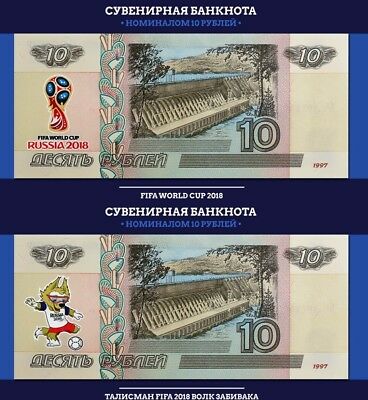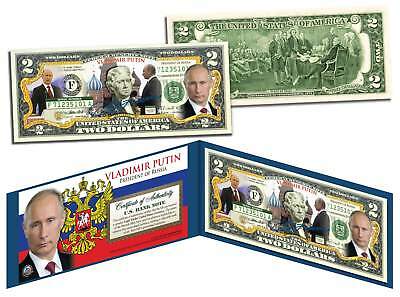-40%
RUSSIA P-11c 10 Rubles 1909 Old Note Over 100 Years Old Lightly Circulated VF!
$ 5.27
- Description
- Size Guide
Description
misterbanknote - Richard J. Reed World Paper Money - genuine world banknotes, hollywood movie prop money, antique stocks, bonds, checks, old coins, souvenir cards, novelty money, fantasy art naked lady billsMISTERBANKNOTE
Since 1981, a dealer in conservatively-graded financial paper collectibles offering fair pricing and fast, friendly service.
World Paper Money & Coins - Antique Stocks, Bonds, & Checks - Hollywood Movie Money
Souvenir Cards - Fantasy Art Bills - Novelty Bills - Numismatic Literature - Antique Newspapers
Find out why we are the wholesale suppliers of some of eBay's biggest banknote dealers!
The sample note
below
is for illustration purposes only. The note you receive may have a different series, serial number, signatures, etc. but will otherwise be similar as to type and state of preservation.
We now offer free economy shipping with tracking for most items of lower value!
Country:
Russia
Denomination:
10 rubles
Price:
.99
Catalog #:
11c
Product ID:
22031805
Year:
1909 (1912-17)
Grade:
VF (extremely fine)
Other Info:
Eastern European vertical format note - over 100 years old! Czar Nicholas II issue.
Coloration:
Peach and olive green.
Depictions:
Ornate printing and finely-printed shield-like ornamental designs and guilloches on the front, circular "10" at left and right flank double-headed eagle coat-of-arms at top center; "1909" in ornamental frame at bottom, on front; The back has a large ornamental frame containing Russian text (Cyrillic characters).
Note Size:
4 1/8" x 6 7/8"
Watermark:
Repeating angular "10"
Security Features:
Watermark.
PLEASE SEE IMPORTANT NEW
SHIPPING INFORMATION
&
TERMS OF SALE
BELOW
BEFORE YOU BID OR BUY
!
ADDITIONAL DESCRIPTION:
The note you receive will be similar to the one pictured above; the series, serial numbers, and signatures may be different, depending on the item.
They are colorful and great-looking bills. Nice item for your collection!
Please check out the other great deals in our misterbanknote store!
FEEDBACK:
We normally leave you (the buyer and our highly valued customer) great feedback once the item has been shipped. Please remember to leave us (hopefully) great five star seller feedback on all points. It is our goal to provide a wonderful buying experience to all of our customers. In order to keep ebay from being overwhelmed by a few large sellers who will then be free to monopolize and control the market, please support us and the other "little guys" out there who deliver a great product in a timely manner and offer you items that you may not be able to find anywhere else (at least at a reasonable price)!
SHIPPING INFORMATION
&
TERMS OF SALE
SALES TAX:
This is charged by eBay for delivery to many U. S. states and so is out of our control.
VAT/CUSTOMS FEES:
These may be charged by eBay for delivery to many countries around the world and so is out of our control.
PAYMENT:
EBay payments are accepted.
We reserve the right to reject any payment for any reason.
ADDITIONAL IMPORTANT INFORMATION FOR ALL BUYERS
DELIVERY:
Every effort is made to send the merchandise to the buyer as soon after payment is received as possible. Bear in mind that once the package has been mailed, it is out of our hands.
Overseas packages, particularly registered packages, can be very slow in reaching their destination, so please be patient.
OTHER TERMS:
Payment is due within 7 days of the sale close date.
Failure to honor your obligation to pay for a winning bid in our auction or instant-purchase sale will result in being placed on our "blocked bidder" list.
We have been dealing in world notes since 1981
and have always run our business by offering
conservatively graded material, fair pricing, and fast, friendly service
,
so
bid with confidence! We are a member of the International Bank Note Society and Florida United Numismatists.
CONTACT US:
thru ebay's "My Messages" system. You can also send standard mail to:
RICHARD J. REED
P. O. BOX 20665
SARASOTA, FL 34276-3665
misterbanknote - because
m
o
n
e
y
does not grow on trees
"Bringing you a galaxy of values"
Portions of this page copyright 2022 by Richard J. Reed - All rights reserved
GRADING STANDARDS FOR BANKNOTES AND SIMILAR PAPER ITEMS
GENERALIZED, NON-SPECIFIC GRADES:
LOW GRADE or HEAVILY CIRCULATED
- generally POOR to VERY GOOD (see below specific grades)
MID GRADE or CIRCULATED
- generally VERY GOOD to VERY FINE (see below specific grades)
MIXED CIRCULATED
- generally LOW GRADE to HIGH GRADE circulated (see below specific grades)
HIGH GRADE or LIGHTLY CIRCULATED
- generally VERY FINE to ALMOST UNCIRCULATED (see below specific grades)
VIRTUALLY NEW
- generally ALMOST UNCIRCULATED to full UNCIRCULATED (see below specific grades)
SPECIFIC GRADES:
POOR
- a virtual 'dog,' generally a raggy, dirty, torn, and sometimes taped-up poor-excuse of a banknote that has seen better days and is generally collectible only as a filler or curiosity unless it is extremely rare.
FAIR
- this is barely one step up, maybe not quite so raggy or dirty but perhaps missing a piece or more of the note along with other defects. This grade still exhibits extreme limpness generally.
GOOD
- like the grade 'GOOD' for a coin, GOOD really isn't so good although it is possible to have a semi-attractive note that still grades only GOOD due to the fact that it may have tears and small missing pieces as well as heavy creasing. Most GOOD notes have seen a lot of circulation and will show evidence of this such as many heavy folds, stains, edge tears perhaps extending into the design, pinholes, a center hole from excessive folding, etc.
VERY GOOD
- this grade will have fewer or less severe defects than the grade of GOOD and a number of VG notes are in fact quite attractive, especially instances where a note has been folded and refolded numerous times on the same creases, wearing a small hole through center and maybe causing a tear to appear in the design. At this point I want to introduce the notion of split grades, that is, an instance where the note is clearly better than GOOD but not quite VG. In this case, we might call the grade G-VG or G+ or even aVG (about very good). Experience is the best teacher for this; after you've handled dozens of well-used notes, you may feel more comfortable about split grading. Maybe you'll never feel comfortable because you might not even like the idea. We use split grades on occasion and believe most dealers and collectors do. I am less enthusiastic about the use of a 70-point grading scale such as is used for grading coins; more on this when we get there.
FINE
- this grade exhibits still considerable circulation with a number of creases, folds, wrinkles, minor border tears (which cannot enter the design portion of the note), and maybe a few pin or staple holes. At this point, a note is appearing somewhat attractive at least. After handling enough different notes, you'll come across some that appear to meet or exceed a certain grade except for some defect. Usually, this is handled by assigning that grade to the note but following it with a description of the defect. For example, you might have a note that is at least a FINE except for that somewhat obvious stain in which case you would describe it as FINE but stained or FINE but moderately stained or FINE but heavy corner stain, etc., whatever the case might be. Naturally the value of a note like this would normally be lower than a defect-free note of the same grade. Generally the higher grade a note is, the more 'picky' you should be about describing a defect that is not a normal characteristic of that grade. For example a VERY FINE note with a tiny tear or two might be listed as VF but border tear or could just be downgraded (or net graded) to F-VF or "net F-VF," though the tear should still be described.
VERY FINE
- Moving along, we start getting into the truly bright and more attractive notes in the VF grade and up. General characteristics of a VF note include: not more than a few vertical/and horizontal folds, a crisp paper, edges and corners can show slight wear but no tears are found in the border areas or anywhere else for that matter on the typical VF note. A slight amount of soil or smudging can be present but this should really be minimal in my opinion.
EXTREMELY FINE
- This is an extremely attractive note, showing only minor evidence of handling. According to the grading standards of the International Bank Note Society, or IBNS, an EF note may exhibit 'a maximum of three light folds or one strong crease.' An EF note is bright and without signs of soil. To the casual observer, it should appear just about new. There will be only very minute wear on the corners or edges.
ABOUT UNCIRCULATED
- The next step up from extremely fine, this is a note which would grade uncirculated except for some very minor handling or use such as a so-called wallet fold where the note has a very light fold (not a creased fold). An AU note might have a slight bend or wrinkle from being counted. In any case, this remains a very bright, new-looking note. An AU-UNC designation is often applied to notes with an extremely inconspicuous counting wrinkle, or a note which might have a tiny corner nick, rippled surface of the paper (due to humidity or some other environmental condition), or a note having a so-called dimple at the top of the security strip.
UNCIRCULATED
- New, as issued, with no defects with one possible exception. It is possible to have an UNC note that has staple holes, this due to the fact that some countries, including India and Pakistan, normally staple quantities of notes together prior to issue. In this case, a description of 'UNC - usual staple holes' is the rule. Otherwise, an uncirculated note is just that. More so in regards to U. S. paper currency but also
occasionally used in describing UNC world notes are the adjectives 'choice' and 'gem.' I could see a particularly well-centered, attractive note perhaps earning one of these designations, however, I'm not convinced we need both terms. This mainly due to the concern that people would next move toward a silly multi-point UNC grading system like that of coins, particularly U. S. coins. In fact this has already happened. Some very rare (and not-so-very-rare) U. S. and world notes are being "slabbed" (put in special sealed holders) and commercially graded by numismatic grading companies using the 70-point scale.
Just my personal opinion, but it seems like a convenient way to squeeze a lot more dollars for a "superb gem UNC MS-66 note." To newcomers to the numismatic community, "MS" refers to mint state (i. e. Uncirculated) and the "66" part indicates the relative "grade of uncirculation" with 60 being the lowest and 70 the ultimate or theoretically "perfect" note. About Uncirculated would range from 50 to 59, etc. This system has been in use for a number of years now in the coin business. The worst part is, the difference in a coin's value from a single key grading range (say MS-65 to MS-66) can be thousands of dollars for a "rare" item. This great difference in perceived value by some is why the whole grading system is controversial by nature because grading, is, in the final analysis, subjective (i. e. "beauty is in the eye of the beholder"). Thus, there is a lot of room for abuse. Also I have not been impressed with the grading of some of the so-called professional grading companies. I once sold a slabbed note that looked to me to be in VG grade but the grade on the holder said VF! I warned the potential buyers of this (the note was in an auction) and still it sold for at least the price of a nice VF note - go figure!). I believe a note will stand on its own; if it's hard to find, attractive, and actively sought by collectors, it's going to bring a better price. Many world notes are also common, but so attractive that they are always eagerly snapped up by enthusiastic collectors. There are a number of older notes from hard-to-find countries that list for a low price in
The Standard Catalog of World Paper Money
but sell for multiples of the catalog price due to the fact they are so difficult to locate. Most world paper collectors and dealers with experience will tell you the catalog is a starting point guide but there are many values listed in there that don't "jive" with the real world - they are either too high or too low in many cases.
Another item to perhaps bear in mind, the grading system for U. S. notes is similar in many ways to that of world notes, but it has been my experience that the world system is generally more conservative, particularly for the upper grades. I have seen ads like "UNC - 1 fold." What does
that
mean? Sounds like an EF or AU note to me (EF if creased, AU if just a light fold or "wallet bend").
An additional point - notes, like coins, have sometimes been cleaned or had their appearance improved in some way. This is not always apparent. Some collectors have no problem with this, others feel, as with coins, that the items shouldn't be altered in any way. For notes, alterations can include actually washing the note (literally "laundering money!"), trimming it, erasing graffiti, pressing the note, mending tears, etc. The buyer should be aware that a note can be washed and pressed to improve its grade and a note altered in this way should not command the price of a note naturally appearing in this grade. A word of advice on mending tears, if you are inclined to mend tears, please don't use cellophane tape. Sooner or later it makes a mess of whatever its been taped to as it turns yellow and brittle. If you feel you need to tape a tear, use the permanent translucent tape that's now widely available.
Hopefully this clarifies grading a little if you're a beginner or at least serves to demonstrate my interpretation of it and what kind of grading criteria you should expect and demand from my company. Clients have been, I am happy to report, very pleased with the quality of service as the return rate for notes has been a tiny fraction of far less than one percent. (These grading standards taken from my
CurrencyBanknotes
web site)
